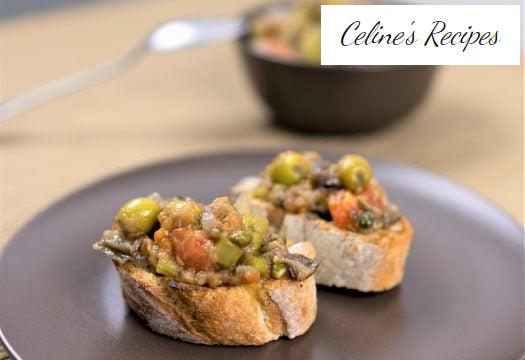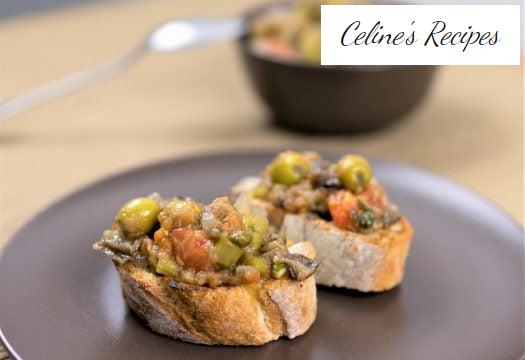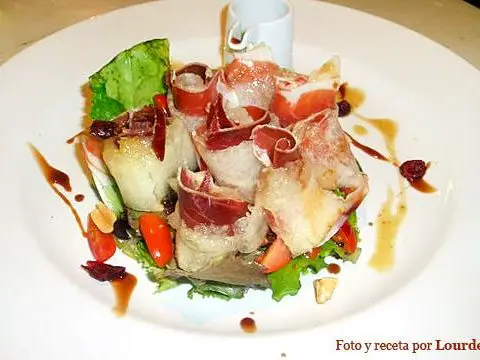
Info.
- Easy
- 35 minutes
- For 6 people
- 1.2 € / person
- 211kcal per 100g.
How to prepare a Sicilian caponata.
Continuing with those easy and cheap vegetable recipes that characterize the blog, today I present you another classic of Italian cuisine, specifically from Sicily, the caponata .
One of the most important dishes of typical Sicilian cuisine, in this recipe for fried vegetables seasoned with a sweet and sour sauce we find eggplant, tomato, celery, onion, olives and capers.
I warn you, before you read in depth, that it can become addictive. An explosion of Mediterranean flavors that, like pasta a la sarde , mixes the best Sicilian products.
You can give your touch with basil or parsley. Sugar and vinegar should not be missing, which are the elements that give it its bittersweet flavor.
I have never tried nuts like pine nuts or raisins, but they say it is very good. I imagine the contrast will suit you very well.
I hope you like it and incorporate it into your kitchen as a healthy vegetable dish.
An icon of our Mediterranean cuisine like other hits on the blog such as shakshuka or ratatouille .
Preparation of the eggplants. Before making the caponata
- We wash the eggplants and remove the top hat or stem.
- Cut them into cubes of about 2-3 centimeters and leave them in a large bowl with plenty of salt and a drizzle of extra virgin olive oil.
- We let it rest for about 30 minutes so that they release part of their water and that they are not so bitter.
- We pass the pieces of aubergine in cold water and drain them very well helped by absorbent paper.
- In a saucepan, add extra virgin olive oil and when it starts to heat up, add the aubergines.
- You can follow all the tips that I comment below in this video.
Preparation of vegetables for this caponata
- Fry until golden brown. It is important that when we fry them there is not too much oil in the casserole because then they will be very hard and we are not interested.
- Finely chop the celery that we will add to the casserole with the eggplant.
- We use both the stems and the leaves, the celery should be in smaller squares than those of the eggplant.
- Chop the onion into small squares. We are going to saute it over low heat in a separate frying pan with a good jet of olive oil for 5-8 minutes. Once pochadita we add to the casserole.
- Peel the tomatoes and grate the pulp of 4 of them. The other 3 we are going to chop into large rooms.
- In the same frying pan where we have prepared the onion, add the minced garlic, and as soon as it begins to brown, add the tomato pulp.
- Cook gently for about 5 minutes until part of the water evaporates and begins to thicken.
- Add the rest of the tomato in large cubes that we have reserved and mix well.
- Thus we will have two types of texture, the flavor of the tomato in sauce and the almost raw tomato pieces. We reserve until the end of the recipe.
- Add the pitted olives, capers, vinegar, sugar, a pinch of salt and freshly ground black pepper to the casserole.
Caponata cooking and final presentation
- Cook over low heat for 5 more minutes. We could add the tomato we have in the pan and mix everything well.
- We separate from the fire, with the residual heat of the casserole it will finish making in about 5 minutes of rest so that all the flavors come together. We try salt and if necessary add a little more.
- We toast some slices of bread, better if it’s from town. Once toasted, we cut a clove of garlic in half and rub the surface of the bread on the face where we are going to put the caponata.
- We put about two or three tablespoons for each toast and eat. It can be eaten hot but it is also excellent served cold.
- I like it best when it has rested for a couple of hours, I assure you that it is delicious.
If you do in quantity you can make your own preserves for another day or just to give as a gift.
Here you have a step by step in photos where I show how to prepare this Sicilian caponata recipe . Do not miss any detail so that it is perfect for you, as in Sicily itself.
Curiosities about the Sicilian caponata
- The origin of this dish dates back to the 18th century, when the sailors who lived on the banks used to eat in taverns called ” Caupone “, from the Latin cauponae. Hence the adjective caupona refers to tavern food .
- In the cauponas the food was served in simple dishes mounted on slices of bread, that is how I like it best and how I present the caponata on the blog.
- At first this recipe had fish (with sea bream, tuna, swordfish, …) but in those days, not all the population could afford to eat it, so they decided to replace it with aubergines .
- This main ingredient was introduced to the West by the Arabs in 1440, who brought it from India. It is the Carmelites who popularize them in Spain and then in Italy around 1550.






